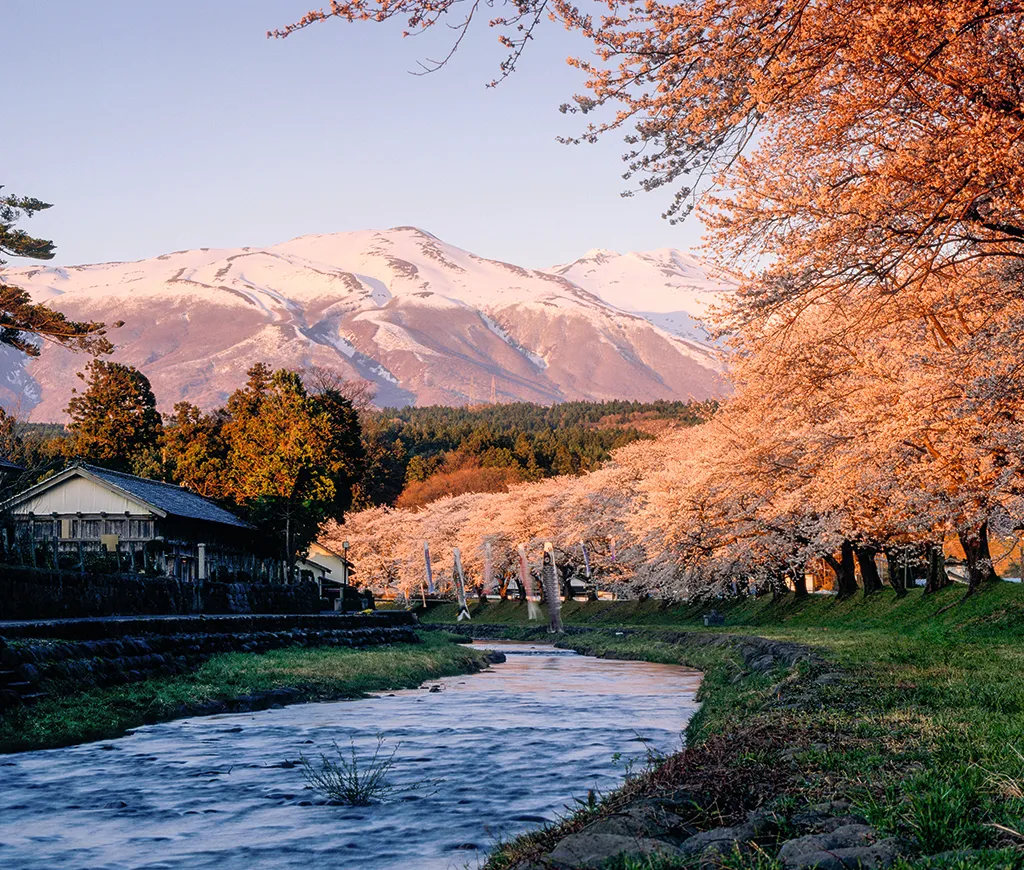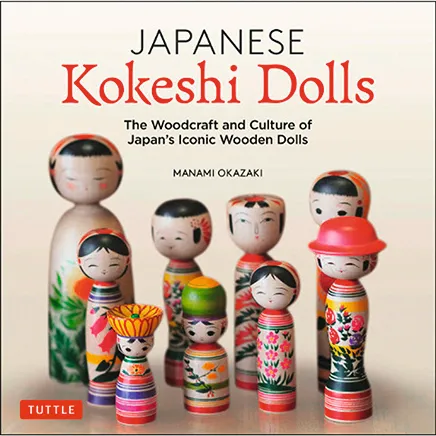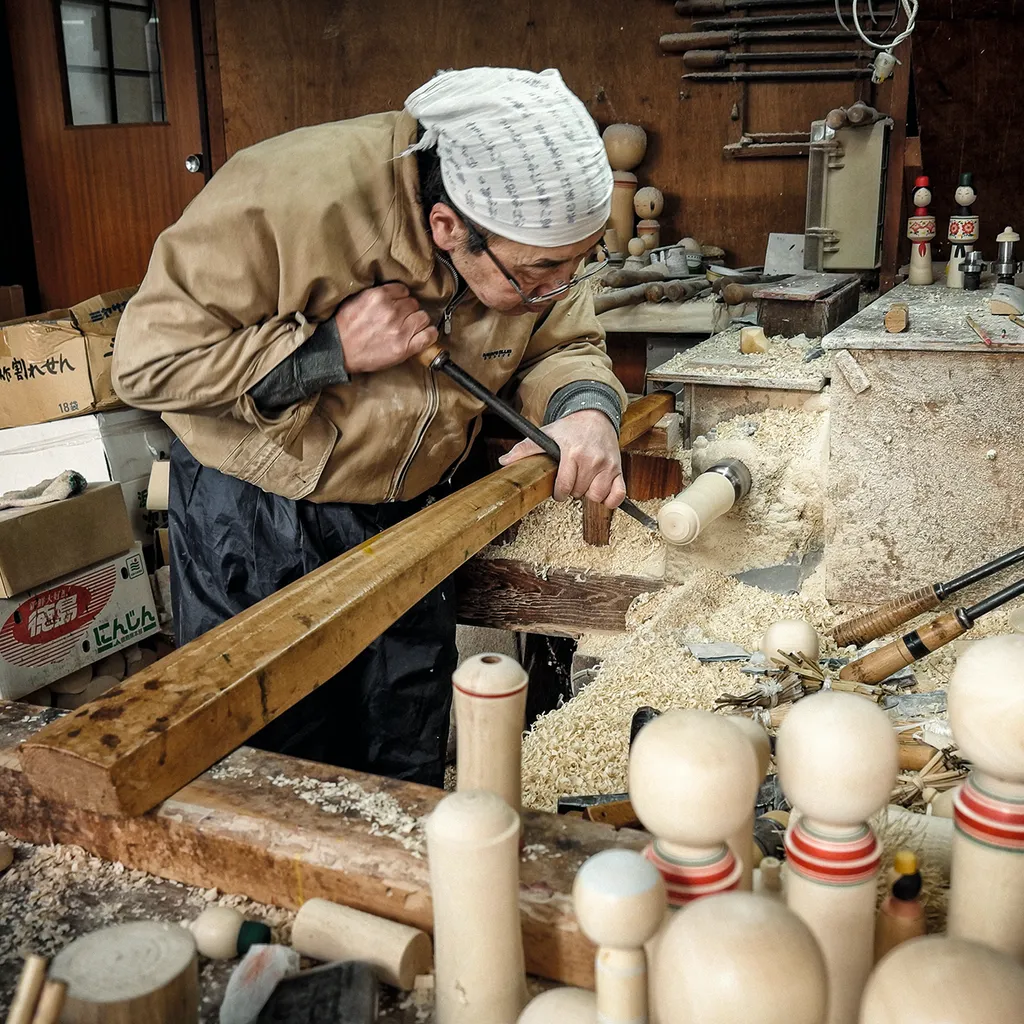Kokeshi are one of Japan’s most intriguing folk art traditions. With no arms, no legs, and oversized heads, the dolls spark very different reactions. ‘Some people immediately fall in love with them,’ says Michael Horner, a dealer who specialises in Japanese antiques, ‘but others find them a bit disturbing.’
Very little documentation exists to explain their roots, but kokeshi were originally made in Tōhoku, a sparsely populated region of mountains, forests, and volcanoes to the north of Japan’s main island.

Michael loves the romance of the dolls’ origins: ‘Centuries ago, during the long, harsh winters, local farmers and artisans made the simple wooden dolls to while away the time and give their children something to play with.
'In the 1800s, outsiders started visiting the region’s hot springs, and they wanted a memento to take home. Just like when the Georgians visiting spa resorts in the UK started buying papier mâché goods, kokeshi were soon popularised as souvenirs, too.’
Manami Okazaki, an author of books on kokeshi, a curator and collector, explains that kokeshi are now part and parcel of Japanese culture: ‘Other cultures have their own doll-making traditions, like the Russian nesting dolls. Whereas Russian dolls are maximalist, with lots of colour and lots of pattern, the Japanese dolls are very minimalist. They’re an aesthetic exercise in how much you can take away.’

For Manami, it’s their simplicity that makes kokeshi so appealing. ‘Although they’re very simple, they’re also incredibly expressive. Their faces are painted with simple brushstrokes and are quite ambiguous, but they have a calming presence. Lots of people feel an emotional affinity with them.’ Michael agrees – one of his customers is a psychologist, who finds the dolls help their patients to open up.
In her recently published book Japanese Kokeshi Dolls, Manami explains that there are two different kinds of kokeshi – traditional and contemporary. Both styles are still made today. Traditional kokeshi are produced by a small group of skilled artisans who serve up to 10-year apprenticeships in the Tōhoku region.
Their dolls are made using long-established materials and techniques and worked in Japanese woods such as cherry, dogwood and maple. These traditional kokeshi follow one of 12 styles, each with distinctive motifs, shapes and colours.

When he acquires a vintage traditional-style kokeshi, Michael finds it isn’t always easy to attribute it to a specific maker, or date it precisely: ‘For kokeshi, there’s no equivalent to a dictionary of silver hallmarks, which for silver makes it relatively straightforward to specify a date, place and manufacturer.
'On the older kokeshi, quite often the signature has worn away, and only the later examples tend to be dated. But one of the pleasurable things about vintage kokeshi is really getting to know the dolls, studying them carefully and then doing your research.’
After the Second World War, a new trend emerged for kokeshi, which didn’t follow any of the time-honoured conventions, and dolls were made all over Japan, not just in Tōhoku. Some people think that they were made for American soldiers stationed in Japan, who wanted cheap and portable souvenirs for their wives and girlfriends, but Manami points to different evidence.

She says that the company Usaburo – the largest manufacturer of new-style kokeshi in the post-war period – made dolls mainly for the domestic market, and that it was Japanese buyers (not American GIs) who drove demand for these more modern dolls.
In her book, Manami introduces some of the contemporary craftspeople exploring the creative possibilities of kokeshi today. But she cautions that there’s one strict rule – they still need to be made using a lathe at some point in the production process. Otherwise, they’re just humanoid wooden sculptures.
With so many different styles to choose between, what’s the best way to start to collect kokeshi? ‘For me, my love of nature, the region, the incredible festivals, and the local people are all encapsulated in kokeshi,’ says Manami. ‘My collection is also very intimate – it’s connected to memories of visiting my grandparents as a child.
And I love travelling to remote studios to meet the makers and their families. But other people have totally different reasons for collecting. Some serious collectors take a very scholarly approach, tracing the family trees of the different artisans, and trying to collect examples from as far back in history as possible.

Some of the really dedicated collectors – people with thousands of kokeshi that they love showing off on social media – have never even been to the region. But it’s their way of connecting to Japanese culture.’
Unlike some types of folk art, which despite its modest beginnings has become quite expensive, kokeshi are still accessibly priced, starting at around £30. Buyers can expect to pay more for older pieces, and groups of dolls made by members of the same family.
But prices rarely reach into the thousands. ‘The world that understands the value of rare kokeshi is actually very small,’ explains Manami. ‘There aren’t lots of potential buyers fighting with each other to get the best pieces, so the prices don’t go stratospheric.
When a Japanese collector with a deep and scholarly knowledge of kokeshi passes away, often their pieces are bequeathed to a kokeshi museum, rather than being sold on the open market.
And unlike some other Japanese cultural pieces, like yuzen [traditionally dyed] kimonos, kokeshi are very much seen as rustic folk art, which also keeps prices low.’ Unfortunately, there are now some fake kokeshi in circulation, which purport to be traditional dolls but are actually made from resin in factories overseas. But, as Manami points out, ‘traditional kokeshi are the antithesis of mass production. No two dolls are the same.’
In 2011, a powerful earthquake devastated Tōhoku. The resulting tsunami flooded the reactors at the Fukushima nuclear plant and caused a major disaster. Manami’s book describes how fashion designers, artists and other tastemakers began collaborating with kokeshi makers to show their support for the region and boost the local economy.
But despite becoming quite hip, life for traditional kokeshi craftspeople is still fragile. Not many young people want to undergo the rigorous kokeshi apprenticeship, and rural areas in Japan are rapidly depopulating.
Although there are a few specialist places outside Japan that sell kokeshi, best of all, says Manami, is to buy directly from the individual artisans for a truly authentic experience. As she concludes: ‘While there is always a looming concern that this humble wooden doll will become a thing of the past, it is undeniable that in the present, encounters with kokeshi are filled with wonder and joy.’
